- Duncan Edwards
- Albums and Singles
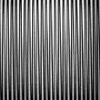 Coolies started out in the late 1990s, a trio of school friends from South Auckland, NZ, making a homemade-punk noise. After a first spurt of activity they lost a couple of drummers, released hardly any music, and seemed to have gone silent. This brief new album captures their gleeful, raw, energy on a reel-to-reel recorder.
Coolies started out in the late 1990s, a trio of school friends from South Auckland, NZ, making a homemade-punk noise. After a first spurt of activity they lost a couple of drummers, released hardly any music, and seemed to have gone silent. This brief new album captures their gleeful, raw, energy on a reel-to-reel recorder.
At this point, Coolies might be seen as an antipodean "garage" equivalent of No Age; albeit less adept at self-promotion and with a little of the spirit of Crass and the Slits mixed in. Master documents their past four years in 27 minutes; going for the throat on each song and displaying little affection for polish on studio pieces and the two live tracks ("Shift" and "Pull the Trigger"). Instead, the onus is on scuzzy spontaneity as guitar feedback, propulsive yells, and uncluttered drumming and bass playing adhere to a still-charming DIY aesthetic. Some songs, such as "Holiday" and "Let’s Pretend" are more obviously melodic and airy than other pieces (for example "Ghost Baby" and "Searching") which have a manic, suffocating feeling.
In 2005, original members Tina and Sjionel were joined by new drummer Stefan. The trio still has an abrasive quality and tension derived from crunching guitar, howling vocals and thudding percussion. It's a sound which to some extent echoes the "boredom" ethos of late-1970s UK punk and more recent US-based "lo-fi" garage groups. Timing is everything, and maybe this is now the Coolies' time.
Read More
- Administrator
- Albums and Singles
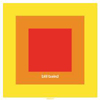 There is something to be said about listening to a good instrumental record on a cold wintry day. The right one should be picked of course, whose notes and timbres are delicate as powdery snow. The music should be austere, but with warm harmonics cutting through the cold like glimmers of sunshine. The eight pieces on this album are just the thing, and have a nice narrative arc that has me thinking of the similarities between novels and albums, how moving both forms can be, and how a good album, even without words, always tells a story. Like curling up with a good book, it’s nice to be inside on a Sunday afternoon comforted by the joys of a turntable and a warm cup of coffee.
There is something to be said about listening to a good instrumental record on a cold wintry day. The right one should be picked of course, whose notes and timbres are delicate as powdery snow. The music should be austere, but with warm harmonics cutting through the cold like glimmers of sunshine. The eight pieces on this album are just the thing, and have a nice narrative arc that has me thinking of the similarities between novels and albums, how moving both forms can be, and how a good album, even without words, always tells a story. Like curling up with a good book, it’s nice to be inside on a Sunday afternoon comforted by the joys of a turntable and a warm cup of coffee.
The majesty of the opening "Slow Implosion" makes for a bit of a top heavy listen, as this is surely one of the gems. Recorded over a few days it features an array of his friends coming over to play all in the same key. The brilliance of it comes from Nathan Stein’s French Horn, an instrument that always lends a regal character. My only disappointment is that the track was cut in half from its original 24 minutes. I would be perfectly happy listening to that as one whole side of an album. If nothing else a URL for the download of the entire track could have been given, but Baird seems to think it had gone on too long. Oh well.
The song "Softly" features cooing vocals layered with warm distortion and is a nice segue to the longer and more fulfilling "Cloud Breath" which utilizes the rare analog soundimension echo box. In this piece one twelve string guitar is tuned to an open A chord and plugged into an amp while another, playing a very loud A resonates the other untouched guitar. Not knowing this detail wouldn’t in anyway detract from the song, which is beautiful in and of itself without the explanation, but as a music geek it is sometimes nice to read notes on how a song was composed.
After the delayed piano of "Surfing" the second side takes off into more melodious realms with Baird’s homage to Philip Glass and his four minute take on "Koyaanisqatsi," his voice whispering the word at intervals, just behind the bass keyboards and guitar. The title track features a very brittle piano, reminiscent of crackling icicles in its opening passage before settling into more somber moments, while still plucking out bright sonorities as an accent.
The last song opens with what reminds me of a car motor sitting at idle, and the whine of strange birds off in the distance. Elegant strumming fades in, mingling with a rustier metallic reverb, as if the strings have been bowed, at last fading into the grumble of old machines. While this solo release from the man behind Sunset, indie-pop favorites from Austin, Texas may not be earth shattering it is a delight, and shows off a different side to Bill Baird’s songwriting.
samples:
 
Read More
- Administrator
- Albums and Singles
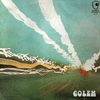 Golem is widely regarded to be a lost psychedelic masterpiece among the sorts of people who are interested in such things, numbering David Tibet, Stephen Stapleton, and Julian Cope among its more outspoken champions.  In fact, Current 93 even covered "May Rain" on Thunder Perfect Mind.  Now, 36 years after it initially appeared, Golem has finally been reissued for the first time in its original form (though it previously surfaced as part of Durtro's Ultrasonic Seraphim retrospective in 1996). I don't think I'd quite call it a masterpiece myself, but it is definitely one of the more memorably bizarre albums to emerge from the krautrock milieu and that is certainly no small feat.
Golem is widely regarded to be a lost psychedelic masterpiece among the sorts of people who are interested in such things, numbering David Tibet, Stephen Stapleton, and Julian Cope among its more outspoken champions.  In fact, Current 93 even covered "May Rain" on Thunder Perfect Mind.  Now, 36 years after it initially appeared, Golem has finally been reissued for the first time in its original form (though it previously surfaced as part of Durtro's Ultrasonic Seraphim retrospective in 1996). I don't think I'd quite call it a masterpiece myself, but it is definitely one of the more memorably bizarre albums to emerge from the krautrock milieu and that is certainly no small feat.
Rotorelief/Delta-Acustic
Rotorelief's enthusiasm for this reissue borders on the unsettling, as they are celebrating its release with related releases by both Current 93 and Nurse With Wound, as well as promising a series of five new Sand albums.  I am having a difficult time wrapping my mind around that last part, as Golem was the band’s first and only record: they broke up soon after it was released and quickly moved onto other projects.  Also of note, the band themselves saw Golem as a bit of disappointment. Adding further to my incredulity is the fact that Sand’s total recorded output to date is exactly six songs, some of which were stragglers from the trio's previous band Part of Time.  However, the Rotorelief website also describes the Current 93 When the May Rain Comes single as an "album," so I guess I have absolutely no idea what to expect.
Curiously, both the cause of Sand's dissatisfaction with Golem and one of the primary reasons for its semi-legendary status share an identical root: producer Klaus Schulze. At the time, Schulze and engineer Manfred Schunke were developing a proto-surround sound recording technique called Artificial Head Stereo Sound and this was one of the first albums to make use of the new technology (and the only one that is still remembered today).  On the downside, the technique apparently compromised the music's dynamics, much to Sand's lasting chagrin.  However, the upside is that Golem sounds crazily vibrant and hallucinatory on headphones and whatever dynamic disasters befell the album are probably unnoticeable to anyone who was not in the band.  I have to side with Klaus on this one.
While the production is definitely a key element to the album's appeal, Sand were also pretty weird in their own right.  For one thing, only two of the three band members (the Papenburg brothers) were "serious" musicians, as the band became Sand after Part of Time's organist and drummer quit.  As such, these songs generally have a very skeletal and oft-dirgelike structure, often just a bass and a synthesizer, or a bass and a guitar.  Despite his lack of instrumental prowess, however, vocalist Johann Vester was the band's resident visionary, contributing both tripped-out atmospheric synth burbling and whooshing as well as some very impressively weird and evocative lyrics (a feat made more impressive by the fact that he was a German singing in English).
It is easy to hear why this appealed to David Tibet so much when he found it in Stephen Stapleton's record collection that fateful day, as Vester seems something like a mad prophet ranting poetically though a gurgling, panning, swooping, and flanging haze.  In fact, it even seems like some moments on this album may have had a direct influence on what Current 93 eventually became, like the moment in "Helicopter" where Johannes portentously sings "And the air is dark and strange and cold…it's moving there," which triggered a flicker of "All the Stars Are Dead Now" in my mind.  At the very least, Golem certainly falls awkwardly into the pantheon of apocalyptic folk that predated Current 93's eventual perfection of the form.
The biggest downside to Golem for me is that Johannes Vester is a rather unique vocalist, to put it politely.  I think he sounds a lot like an agitated leprechaun at times during "Helicopter," but Julian Cope has more insightfully described his unique aesthetic as "post-apocalyptic space-cockney."  My other problem is the song "On the Corner," which clumsily wrecks the lysergic gnomes-and-ghosts-and-dark-forests vibe of the album with some utterly baffling hippified blues rock and over-exuberant conga playing from Schulze.  Even the lyrics are mundane—I don’t get it at all. Also, I think the Current 93 version of May Rain hopelessly eclipses the original, but I suppose that is an inherent hazard in letting David Tibet cover one of your songs. However, none of those grievances change the fact that this was (and is) a deeply aberrant and unique record:  Golem is the sound of cutting edge analog mindfuckery circa 1974 and no one else has quite made anything like it.  I can't call the experiment a complete success by any means, but "batshit crazy, but flawed" still trumps most other music in my book.
(The Rotorelief reissue has slightly different (Babs Santini!) cover art than that pictured, but not much different.  It merely looks less grainy.)
 
Read More
- Administrator
- Albums and Singles
 Hopelessly smitten by Buda Musique's long-defunct series of albums devoted to Angola, Analog Africa's Samy Ben Redjeb decided to try to pick up where his predecessors left off.  Characteristically, he quickly discovered that such an endeavor was much more convoluted and challenging than he had ever imagined, but ultimately made it through the gauntlet of denied visas, obligatory bribes, prohibitively expensive hotels, and ill-timed food poisoning to assemble what is possibly his finest compilation to date.
Hopelessly smitten by Buda Musique's long-defunct series of albums devoted to Angola, Analog Africa's Samy Ben Redjeb decided to try to pick up where his predecessors left off.  Characteristically, he quickly discovered that such an endeavor was much more convoluted and challenging than he had ever imagined, but ultimately made it through the gauntlet of denied visas, obligatory bribes, prohibitively expensive hotels, and ill-timed food poisoning to assemble what is possibly his finest compilation to date.
There is something about adversity tends to result in great music, and conditions don't get much adverse than those in Angola during the time of these recordings.  For one thing, the country was the battleground for the Colonial War from 1961 to 1975, as Angolan revolutionaries fought to expel their Portuguese rulers. Then, that finally accomplished, the country immediately plunged into a 27-year long civil war and a whole lot of poverty and social unrest.  Even today, Angola has the world's second lowest life expectancy.  Of course, the arguable silver lining to all that death and misery is that nobody had the time or patience for frivolity, self-indulgence, over-orchestration, over-production, or pretension in their music: these guys were lucky to just be cutting records and tried like hell to make them count.  In fact, hardly anyone even seems to have had access to a horn section: just a guitar, a bass, whatever percussion they could get together, and maybe an occasional organ.  It is unfortunate that these bands were so stripped down out out of sheer necessity, but it is an aesthetic that suits my discerning ears quite well.
Much like many of the other exciting and highly localized music explosions that have been anthologized recently, the prime period for music in Angola coincided with a collision of African and Latin influences.  It also coincided with a strong desire to create a distinct Angolan sound to assert their cultural independence from Portugal.  For the most part, the Latin influence makes itself felt mostly through driving, vibrant percussion and simple, insistent bass lines.  The African elements, on the other hand, manifest themselves most strongly in the clean, intricate guitar lines.  The blending of cultures gets a bit blurrier than just that though, as touches of American surf music and other esoteric surprises occasionally pop-up as well.  Also, there is a definite feel of urgency and melancholy in a lot of these songs, which serves to tone down the Latin percussion to a suitably non-manic pace.
The definite stand-out piece on the album is Quim Manuel's "Eme Lelu," one of the rare times horns make an appearance.  The cool brass parts are just gravy though, as the song's real charm lies in its mesmerizing, sinuous rhythm.  I also loved the tensely repetitive "Mecongo Mi Chiquita," by Ferraro Do Nascimento. There's quite a bit of other strong material here too– nothing that quite floored me, but the hit-to-miss ratio is quite a bit better than it has been on the last few Analog Africa comps.  I think the probable cause is that a lot of these musicians have a solid understanding of understatement and nuance, which is greatly appreciated, as the more hyperactive strains of Latin-African hybrids tend to grate on me.  As do most jubilantly happy, major key songs, which is why I was very surprised to find that the man behind the jaunty "Uma Amiga" (David Zé) was murdered in a wave of repression that followed a failed coup (along with several other influential musicians).  In fact, most of his music is impossible to find even now because people were so frightened to be caught with it during that dark period.  Sometimes, even seemingly innocuous music holds morbid surprises, I guess.
Obviously, the music is the main draw here, but I have definitely fallen completely in love with Analog Africa's packaging: each new album is like the next chapter in the unfolding autobiography of a passionate and compelling eccentric.  There are lots of people out there scavenging the world for great lost music and many of them do an excellent job providing colorful or informative context and liner notes, but only Redjeb makes a point of also explaining exactly why he is excited about each project, recounting the absurd lengths he went to to make it happen, and including as many interviews with the people involved as possible.  I get the feeling that each new release is the most important thing in the world to Redjeb, not just "the next album." For Angola Soundtracks, he even postponed going to the hospital while seriously ill just because people kept stopping by to sell him records; I'm sure someday I will probably read about him braving an alligator attack or navigating a minefield or something just to interview some guy that played maracas on a 45 he likes.  Samy is the music nerd's music nerd– it is impossible to remain unmoved by his enthusiasm.
- Ferreira Do Nascimento, "Mecongo Me Chiquita"
- Quim Manuel O Espirito Santo, "Eme Lulu"
- Alliace Makiadi, "Passeio Por Luanda"
 
Read More
- Administrator
- Albums and Singles
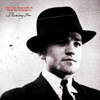 I haven’t seen Dummy Jim yet, but if this soundtrack is any indication, it must be a truly unconventional and memorable film. With the aid of bizarre instrument builder Sarah Kenchington, Daniel Padden and his cohorts have created a kaleidoscopic collision of traditional Anglo-folk, free jazz, drone, and deep-seated eccentricity that sounds like absolutely no one else.
I haven’t seen Dummy Jim yet, but if this soundtrack is any indication, it must be a truly unconventional and memorable film. With the aid of bizarre instrument builder Sarah Kenchington, Daniel Padden and his cohorts have created a kaleidoscopic collision of traditional Anglo-folk, free jazz, drone, and deep-seated eccentricity that sounds like absolutely no one else.
“Dummy Jim” was James Duthie, a deaf-mute Scotsman who embarked upon a 10,000 mile bicycle tour in 1951. A copy of Duthie’s rare published journal (I Cycled into the Arctic Circle) found its way into a used bookstore on the Isle of Iona. As it happens, director Matt Hulse’s mother worked there and she snapped it up and brought it home. Hulse was immediately struck by the strangeness and warmth of Duthie’s tale and Dummy Jim soon came into being. To Hulse’s great credit, he has enlisted some of the only musicians around that are idiosyncratic enough to befit the subject matter. Few directors would risk using music this attention-grabbing in a film.
The music here will probably not surprise anyone that is familiar with The One Ensemble’s previous work, but it is likely to be revelatory for those who haven’t. The album is made up 19 pieces of varying lengths, some of which are actual songs with vocals (usually by Aby Vulliamy) and some are more incidental in nature. The Ensemble’s aesthetic remains quite coherent throughout though: Dummy Jim is a very organic and abstractly folky album, built around haunting strings, wheezing horns, and sleepy woodwinds. Of course, Kenchington’s instrumental Frankensteins are far from traditional in appearance and performance, but they all basically still sound like brass or wooden instruments, so there are no jarring stylistic shifts.
The similarities to traditional folk music pretty much end at instrumentation and timbre, however (although some relatively straightforward melodies make intermittent appearances). The Ensemble’s odd lurching rhythms, creative layering, and shambling interplay combine to transform rather basic materials into something quite unique. These same characteristics are prominently displayed on the songs written by Kenchington too, as her mechanized sculptures often lock into odd, repeating loops of strange, disjointed sounds that slowly cohere and escalate in intensity (such as in “Cows”). Incidentally, the liner notes don’t make it entirely clear whether any collaboration occurred between Sarah and the Ensemble, aside from on just one track. I don’t think there was, though Kenchington and Padden have recorded together in the past. Regardless, the album fits seamlessly together anyway.
The whole album is generally compelling and is probably best when taken in its entirety, but there are three distinct types of songs (aside from the handful of rather brief Kenchington pieces). First, there are the dense, rippling drone pieces, such as “Universal Wonders” or “Lumberjacks,” which approximate the low drone of a bagpipe ensemble using bowed strings and sustained brass, while clattering improvised percussion skitters and crashes all around. Then there are some relatively straightforward soundtrack pieces, such as the quirky and propulsive “Better to Wear Out Shoes Than Sheets,” which sometimes feature some achingly beautiful intertwining strings. Even these pieces sound unique, as Padden and company imbue them with a ragged humanity and subtle avant-garde touches like prickly microtones. Finally, there are bizarre, cartoonishly stumbling pieces like “A Couple of Jumpers,” which undulate like inebriated caterpillars. As a consequence, the album follows a rather odd trajectory, rife with unexpected twists.
Notably, I have generally not been a big fan of Padden’s work in the past, as I could not get past his absurdist tendencies or manic forays into the Zornification of Jewish/Eastern European melodies. Those tendencies are largely minimized here, however, enabling me to finally appreciate The One Ensemble’s strange and beautiful vision without distraction (I guess I have some back catalog reevaluating to get started on). Obviously, music this fiercely individualistic is not for everybody, but if a deranged, but skillfully harnessed, mash-up of Ornette Coleman, Harry Partch, Dexy’s Midnight Runners, and Captain Beefheart sounds at all appealing, this is a pretty great place to start. Regardless, Dummy Jim is anything but boring.
Samples:
Read More
- Administrator
- Albums and Singles
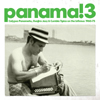 This is allegedly the swansong for Soundway’s excellent Panama! series- an unexpected choice, given that the rich vein of material doesn’t show the slightest sign of being exhausted (perhaps the compilers just need some time away from the heat and the mosquitoes). Though the focus has shifted away from funk this time, this third volume remains every bit as exuberant, smoldering, absurd, and fun as its predecessors.
This is allegedly the swansong for Soundway’s excellent Panama! series- an unexpected choice, given that the rich vein of material doesn’t show the slightest sign of being exhausted (perhaps the compilers just need some time away from the heat and the mosquitoes). Though the focus has shifted away from funk this time, this third volume remains every bit as exuberant, smoldering, absurd, and fun as its predecessors.
One of the most endearing aspect about the Panama! compilations are Roberto Gyemant’s lively and amusing liner notes, which contain none of the academic recounting of facts common with similar albums. Instead, they offer colorful mixture of enthusiasm and anecdote that allows listeners to share (in some small part, at least) the thrill of discovery. For example, a local character named Tommy is responsible for introducing Gyemant to several of the best songs that he heard during his stay in Colón. Tommy's shack is an essential stop for music afficionados, as he has a deep love of vintage soul and Jamaican music, which he constantly blares from two large speakers set up outside. Tommy does not have a corresponding deep love of vinyl though, so he rips whatever he wants, digitally removes the crackle, and throws the record in the trash (a personality quirk likely to drive musicologists to tears or paroxysms). The eerie crooning of the ukulele-based “Masters are Gone” was one such find, sending Roberto on a desperate search to track down the actual record somewhere. Thankfully, he was successful, as it’s a great song.
Naturally, a number of the best artists featured on the earlier compilations appear again. Lord Cobra again nearly steals the show with his dark and melancholy strain of calypso (“Colón Colón”), but there are a number of other great calypsos included as well- most notably Black Czar’s ridiculous story-song “Bamboo Dance,” in which our hapless narrator is seduced by an older woman at a dance. Papi Brandao’s sizzling take on the standard “Bilongo” is another clear highlight, but the whole album is teeming with great moments covering a number of stylistic strains (the big band numbers from the ‘60s are particularly strong). There are some unexpected and odd surprises thrown in too, such as Little Francisco Greaves’ distinctly un-Latin “Moving-Grooving,” which features some infectiously raucous James Brown-isms.
I deeply regretted my lack of Spanish fluency at several points during the album. I am certain that I am missing out on a great deal of clever wordplay and saucy double-entendres strewn all over the many calypsos, though many of the artists helpfully bounce effortlessly back between English and Spanish (with some occasional other surprise languages thrown in too). Also, one of the most eccentric story songs on the album (“Combo Pa’ La Tineda”) probably loses a lot in its summarized translation. Fortunately, passion and charisma go a long way towards transcending language barriers and there is no shortage of either on Panama! 3. This is a great album. I hope Roberto and his co-compilers take on another project together soon, as they have a definite genius for finding great lost music and presenting it as a raw and sensuous party.
Samples:
- Lord Cobra – "Colón Colón"
- Orquestra de Armando Baza con Manito Johnson- "Samba Calypso"
- Papi Brandao y Sus Ejecutivos- "Bilongo"
Read More
- Administrator
- Albums and Singles
 2009 has certainly been a great year for this young banshee from Wisconsin. Zola Jesus has put out numerous releases this year, each featuring high quality songwriting and production. To have so many releases of such a high quality is truly impressive, and this collection continues that hot streak.
2009 has certainly been a great year for this young banshee from Wisconsin. Zola Jesus has put out numerous releases this year, each featuring high quality songwriting and production. To have so many releases of such a high quality is truly impressive, and this collection continues that hot streak.
I first came across Zola Jesus' song Rester on the XXperiments compilation released by Die Stasi. Aside from being the sort of messy lo-fi straight-to tape electro-noise-pop I love, there was this Voice. One with so much soul behind it I almost cried. I was totally smitten by this new artist. I quickly went and scoured the blogsphere for her already out-of-print and hard-to-get singles. As soon as I had the spare cash I ordered her "Soeur Sewer/Odessa" 7" and the now out of print New Amsterdam CDR from Sacred Bones (both stellar, and the former included on this CD edition). And then I was sadly dissapointed when she dropped off the North East summer tour with Dead Luke and Wet Hair, who played my friend's basement.
As aforementioned, this CD includes two of the singles from earlier this year, making any more illicit downloading less necessary. Besides, the songs "Dog" and "Odessa" are still stand out tracks, even if they are oldies from her catalog. Also, we get to easily follow the developement of the Zola Jesus sound. The earlier singles are dirtier, sexier, more intense. I blame the change from home-taped recording and the addition of a new drum machine for this, though Zola has kept as much of the rough hewn vocalizing intact in her sound. Her voice, really, is the soul and core of the music. It's undeniable. I love the juxtaposition of this trained operatic voice set slightly out of time and key with overdubbed harmonies and gritty electronics. On The Spoils she uses more reverb and single vocal tracks. I've never observed the loss of warmth and charm when switching to digital recording from analogue more apparently than here.
I can't help but be so nit-pickily critical of this CD. The impact that Zola Jesus' music had on my for the first few months of this year was intense. Her earlier singles and mini-LP pretty much owned my MP3 player for four or five months. I would still put this in my top 3 albums of 2009, easily, but The Spoils didn't completely hold up to my expectation, and I can't stop running over in my head, again and again, why. It's blusier and less "experimental" and the songs are less about texture and more about songcraft. More aften than not, the arrangements are simply voice, piano, and percussion. There's none of that amateur voice tracking I loved on the singles, and the songs don't drift off into rhythmic sound collage either.
The album is still intense. It goes into this Americana Gothic folklore that I usually think of as corny, but is sung so hauntingly and passionately that I can't resist. "Devil Take You, Clay Bodies" and the disc opener, "Six Feet (From My Baby)," merely hint at the dark underbelly of the music. When I first heard this disc in mid July, it wasn't the right season for the music, but now in late autumn, with the mist and frost holding tight to bare trees and fence rows under the steely grey skies of December in New England, I'm getting back into it.
Personally, so much music I listen to needs a specific time and place, and these dismal days are perfect for Zola Jesus and The Spoils.
Read More
- Administrator
- Albums and Singles
Burnt Up On Re-Entry is an adventurous, unpredictable and exceptional piece of music, which marks the evolution of Mat Sweet’s sound from the minimalist acoustic approach he has previously taken on his four albums for the Kranky label, to a more adventurous and experimental treatment of his songs.
Burnt Up On Re-Entry is a place - an infinite space - where dark psychedelics are crafted using a combination of raw electronics, manipulated samples and heavy rock guitar. Where once other instruments were rare interludes betwixt brooding vocals and carefully plucked guitar, now they have a much bigger part to play, shaping entire songs into an animated whole. The songcraft on Burnt Up On Re-Entry remains centred around a heavy melodic and melancholic core, which has been prevalent across the entire Boduf Songs canon.
"Fiery The Angels Fell", the album opener, is a fine example of this bold exploration into an even more dynamic form of composition. It begins with Mat Sweet's hushed, mournful vocals and gentle string picks but quickly picks up the tempo, pushes the electric guitar to escape velocity and lurches out of its gravitational field. "Vermin Rend Thy Garments" and "Drexelious Sick Man Quarles Emblemes Closed Heaven" shift the planet on its axis yet again, the latter morphing into pulsing electronic tones with unearthly vocals and haunting synthesised dark matter. "Everyone Will Let You Down In The End" appears to provide a warm familiarity but eventually a disturbance occurs within its uniformly rotating mass, before erupting in a supernova explosion.
When the album draws to a close with "Oh My Overlord" we are left hurtling through blackness as bleeping radio transmissions fade in and out amidst epic, otherworldly instrumental soundscapes - we are lost in space, the place that Boduf Songs masterfully forges and envelops the listener in.
Burnt Up On Re-Entry is very much another galaxy for Boduf Songs, allowing Mathew Sweet to explore new black holes and interstellar clouds, resulting in expanding sounds that interact powerfully with his finely honed songwriting, and presenting a new hypothesis of the universe.
Grab your telescope and join him.
Read More
- Administrator
- Albums and Singles
In the latest Pink Flag email newsletter,  Wire have announced the forthcoming album, Change Becomes Us, due March 2013. The album consists of material not recorded between 1979-1980, existing until now mainly as "sketches" for a one-off performance. More information including ordering details below.
Wire have announced the forthcoming album, Change Becomes Us, due March 2013. The album consists of material not recorded between 1979-1980, existing until now mainly as "sketches" for a one-off performance. More information including ordering details below.

2012
After a year's hectic touring in 2011, 2012 was a quiet one for Wire. The group played only a handful of festivals, including Wire's debut in Russia, at Moscow's Avant Festival, in April. This November saw Wire in Japan for three shows, including a happy return to Club Unit in Tokyo, where they performed in 2011. Wire's last performance of 2012 was at ATP's Shellac-curated "Nightmare Before Christmas" Festival, on ATP's return to a refurbished Camber Sands. Warm clothes proved to be essential!
Change Becomes Us (pf20)
We can now reveal part of the reason for the low number of performances in 2012 was to facilitate the recording of the next Wire album, "Change Becomes Us", now being readied for release on March 25, 2013. "Change Becomes Us" began as an exploration of unrecorded material originally written in 1979–80. Some of this material had only ever existed as quickly prepared sketches for one-off performance; however, subjected to the rigour of a Wire working process of both touring and studio, it evolved organically into what we think is a fascinating hybrid. Liberated from its historic roots, it simply took off! "Really fresh!" is the common quote of the few who've heard it!
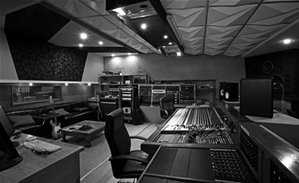
The initial recording sessions were held at Rockfield studios, near Monmouth, Wales, during a very damp week in April. Rockfield, famous for being the first residential studio in the UK, has also been the location of the making of many legendary rock albums. Paul Morley recently visited Rockfield for his documentary Radio 4 series on recording studios, "Making Tracks". It was our intention to bring as much of the dynamic energy of the 2011 touring group to the recording and Rockfield is ideally set up to capture both power and nuance in recording. Wire have never recorded quite like this! This album is also the first time where Matthew Simms, previously Wire's touring guitarist, has been an integral part of the Wire recording process. Over the year, the 13 tracks which make up the Welsh Wire recordings have been refined and focussed at swim~ studio to arrive at the finished album: "Change Becomes Us".
Here's the tracklisting
01 Doubles & Trebles
02 Keep Exhaling
03 Adore Your Island
04 Re-invent Your Second Wheel
05 Stealth Of A Stork
06 B/W Silence
07 Time Lock Fog
08 Magic Bullet
09 Eels Sang
10 Love Bends
11 As We Go
12 & Much Besides
13 Attractive Space
UK Release date is 25th March 2013
Books
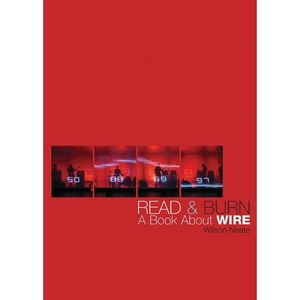
Over the course of this and last year, another Wire-related project has been gathering pace towards a March 2013 resolution. Wilson Neate, who wrote the acclaimed book on the subject of "Pink Flag", has been working on what has been described as "the first serious, in-depth appraisal of Wire", a book entitled "Read & Burn: A Book about Wire". Although he has extensively interviewed the band and many of the key players in the Wire story, Wilson stresses this is not an "official" biography. (We understand by that he implies "not sanitised".) Indeed, he makes the point that "the musicians' perennially complex creative relationships" is very much part of the story. Expect "warts & all"! The book covers the entire history of the band and even has a chapter in which the recording of "Change Becomes Us" is discussed.
The subject of books brings us to the next Wire-related "book", which will be the "Change Becomes Us" special edition CD. Yes, you read that right. The special edition of the "Change Becomes Us" CD will be a glossy hard-backed book. Exclusively available from our Mail Order, it will contain documentation of the story of the album alongside extensive studio photos and the complete lyrics—plus, of course, the CD! There will be an edition of 1000.
The Legal Bootleg Series - Series 2
The Legal Bootleg series 1, which first became available in 2010, has proved to be a quietly popular hit amongst you. For those that don't know it, the series features selected live recordings from throughout Wire's history. The "masters", often sourced from the the original audience member who recorded it, are cleaned up (if needed) and mastered before being presented in a rolling digital series. These live recordings often show the band in a very different light to the studio recordings and are completist essentials!
We're now planning a second series of 9 recordings which will include gigs from the 70's up to the present and will also encompass radio recordings. Included will be West Runton Pavillion (1978), Amsterdam - Roxy Music Tour (1979), Berlin (1979) Amsterdam (1987), Metropol, Vienna (1987), Mean Fiddler (1990), The Garage (2000), Scala (2008), German Tour (2009), European Tour (2011) and we are sure we'll find some more! In addition there will be two digital special items, available exclusively to those that order the complete series. One will be the unreleased "Recycling Sherwood Forest", a reimagining of Wire's 23rd Feb 2000 pre-RFH show at Nottingham Social, enhanced from the original 8-track recordings and existing in a space somewhere between a live and a studio recording. The other will be US radio sessions at KEXP & WFMU recorded during the North American April 2011 tour. We will provide more information in a later newsletter and hope to have the first set available before Christmas. You can also pre-order now as part of the "Change Becomes Us" bundles.
The Plan
We normally like to have some kind of plan for our core fans via our mail order when we put out a new album, and this time we have quite a serious one! We have already mentioned the special edition, and this is ready for pre-order right now! Not only that but everyone that pre-orders the special edition will receive the album digitally one week before release and will also go in the draw to be one of two of the "core fan" guitarists in the "Pink Flag Guitar Orchestra" for a special event in London on the eve of the album release—more about that later. You can also take the "Special Edition" in various combination bundles, making savings on buying the items separately. For example, there is also a T-shirt (black shirt/white text; "Change Becomes Us" on the front; "Wire" on the back) ONLY available with the special edition. Pre-order the "special edition" with the T-shirt and you'll get the T-shirt straight away..


You might want to add Wilson's book or the new Legal Bootleg series. There are bundles galore including "collector bundles" which you can check out below!
Special Edition Change Becomes Us Bundles
1. Special Edition - Pre Order
2. Special Edition + Wilson Neate's "Read & Burn" book - Pre Orders
3. Special Edition - Pre Order + "Change Becomes Us" T-Shirt
4. Special Edition + Wilson Neate's "Read & Burn" book - Pre Orders + "Change Becomes Us" T-Shirt - AKA "Full Pack"
'Legal Boots' Special Edition Change Becomes Us Bundles
1. Special Edition - Pre Order + legal bootleg series 2
2. Special Edition Full pack + legal bootleg series 2
'Collector' Special Edition Change Becomes Us Bundles Only available with Full Pack
1. Special Edition album full pack + Read & Burn 03
2. Special Edition album full pack + Read & Burn 01 (5 available)
3. Special Edition album full pack + Read & Burn 02 (5 available)
4. Special Edition album full pack + The Third Day (5 available)
5. Special Edition album full pack + It's All In The Brochure (5 available)
6. Special Edition album full pack + All 5 (2 available)
'Collector Vinyl' Special Edition Change Becomes Us Bundles Only available with Full Pack
1. Special Edition album full pack + Object 47 Special Vinyl edition with Read & Burn 03 (3 available)
2. Special Edition album full pack + Pf 456 (5 available)
3. Special Edition album full pack + 12 Times You 7" (1 available)
Collector T-Shirt' Special Edition Change Becomes Us Bundles Only available with Full Pack
1. Special Edition album full pack + pink flag t-shirt (M) (1 available)
2. Special Edition album full pack + pink flag t-shirt (L) (1 available)
3. Special Edition album full pack + Read & Burn 08 T-shirt (XL) - (1 available)
4. Special Edition album full pack + OBJ 47 T-shirt (blue design) (L) (1 available)
5. Special Edition album full pack + OBJ 47 T-shirt (blue design) (M) (1 available)
'Guitar' Special Edition Change Becomes Us Bundles Only available with Full Pack
1. Special Edition album full pack + Eastwood Breadwinner (white) (1 available)
2. Special Edition album full pack + Eastwood Airline Map (seafoam) (1 available)
Both guitars will have been played by Colin Newman and will be handed over personally by him in London after the 24th March 2013
PLEASE NOTE
We'd like to make it clear that this is the only format that will be available for pre-order from us so far ahead of release. The regular digipacked CD and vinyl will be available when they are released; in the case of the vinyl, it will be one month after the album release because we want to put out a special version for Record Store Day. (We love you to buy stuff from our shop but we also want to keep record shops in business!)
We will of course keep you up to date on further news, including that mysterious "special event" (or is that "special events"?) next March! Until then, all the best from Wire.
Read More
- Administrator
- Albums and Singles
 Eight new broadcasts from the chilly world of the Arctic Lofoten Islands are made available on this double disc and, in some ways, they all exemplify just how much Steven Stapleton must be falling in love with digital sound stretching. Just as the first volume was an effort to reshape the world around them in sound, the second volume of Shipwreck Radio turns the world of Lofoten into a strange place occupied by distortions of the Arctic's natural sound world.
Eight new broadcasts from the chilly world of the Arctic Lofoten Islands are made available on this double disc and, in some ways, they all exemplify just how much Steven Stapleton must be falling in love with digital sound stretching. Just as the first volume was an effort to reshape the world around them in sound, the second volume of Shipwreck Radio turns the world of Lofoten into a strange place occupied by distortions of the Arctic's natural sound world.
ICR
Every last track starts with a warning, a little signature from Stapleton and Potter that must've announced the coming weirdness to everyone that had their radios set to the right frequency. "BEEP, Welcome to Utvær," over and over again, in various forms, occupies the first seconds of every track. I have to wonder why, everyone knows what this is, the whole concept is too cool to ignore and, to some extent, the concept adds to the grandeur of the music. At times it almost seems like that infernal beeping is a necessary part of the music, as though Stapleton and Potter wanted to use it as an integral part of their construction and, at other times, it seems like an inexplicably placed marker for travelers who already know where they are.
Once the damn beeping is said and done with, the majesty of the work that follows is undeniable and in some ways, very much a return for Stapleton to his work on Soliloquy for Lilith. Gone are the signature Dadaist sound collage menageries or the out-and-out whacky constructions of found sounds and semi-krautrock influenced rock and in is the eerie, slowly moving ploughs of heavy, dirty soundscapes. There can be no doubt of Lofoten's remoteness nor of its strange openness, the absolute loneliness its landscapes must inspire after listening to both discs. In absence of chance to be left wandering in the snow or out on the sea during a blizzard, Stapleton and Potter have provided a chance to hear what it might feel like, in a slightly masked form.
While the duo, to a large extent, is masking the real properties ofthe sounds they recorded, the drama that their manipulations add to thesamples is nothing short of necessary for the album and maybe even forthe mythology and liveliness of the islands. It's hard not to imaginethe ice-blue frames of sunken ships creaking beneath the water, fishswimming in and out of their halls, and perhaps stranger creatureswaiting inside. "June 6" is especially effective in eliciting thatshuttering, wavering, and wearying sense of ill fortunes andunspeakable terror. In some senses, however, I'm slightly disappointedthat more sounds weren't left alone or simply edited only slightly.Many of the tracks seem to be fiercely aquatic or perhaps subterranean,but the sounds of Utvær could've been equally interesting and having asense of where some of these sounds might've come from would've addedto the intrigue of the islands and the whole project.
As it stands, Shipwreck Radio Volume Two seems a tribute to exactly what its title implies. The haunted world of dead mariners, sunken ships, and impossibly dark caverns all get their share on this record. The only place where the program really changes is on "June 19," where Nurse with Wound slowly builds a strange industrial disco composed of all manner of chains, sheet metal, and empty oil drums. Birds are plainly audible in the mix as are the swells that dominate most of the album. It's the best and most fun track on the album, partially because it stands out from the rest of the album so much, but mostly because the duo incorporate a wider variety of sounds within this one track. I can almost dance to it and the pseudo-melody that plays through the background is way too easy to hum for my own good. The entire album is beautiful, sometimes scary, and outright strange, but a part of me very much wanted to hear the people of Lofoten and its natural beauty as much as anything else.
samples:
Read More
- Administrator
- Albums and Singles
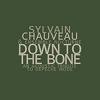 Sylvain Chauveau’s acoustic tribute to Depeche Mode starts off well but soon plummets into a chasm of middle of the road yawns. Down to the Bone is less of a tribute and more of an insult.
Sylvain Chauveau’s acoustic tribute to Depeche Mode starts off well but soon plummets into a chasm of middle of the road yawns. Down to the Bone is less of a tribute and more of an insult.
DSA
While Depeche Mode may not be the most diverse band in terms of melodies, it is still easy to recognize a song the second it starts. Chauveau has stripped (pun partially intended) all the songs here of their character leaving only a bland mess. I applaud his intentions of taking one of the distinctive parts of Depeche Mode (the electronics) and covering the songs without it but his execution is flawed. It sounds like he learned to play one Depeche Mode song and instead of learning the music to other songs, he just plays the same bit of piano and sings the lyrics over it.
Ensemble Nocturne do pretty much the same thing but with different instruments. The opening track “Stripped” at first seems like a nice piano-led cover of the song. However in the context of the album it is lost as every track sounds the same. There is no song on Down to the Bone that I felt was distinctive or that sounded anything more than a musician with too much time on his hands.
Another thing that annoyed me about Chauveau was his singing. He seems to be just aping Dave Gahan in a particularly unpleasant way. Gahan may be dreary and interesting but Chauveau is dreary and dull. There seems to be no love or passion for the original material in his delivery. If I liked an artist enough to record an entire album of their songs I would hope I sounded a little more enthused with the work. Chauveau has less life in him than Gahan did during his overdose. The most prominent example of this is on “Enjoy the Silence” where Chauveau sounds like he’s enjoying the silence from a coma.
Down to the Bone was probably meant to be an attempt to make Depeche Mode sound more human and natural. The problem is Depeche Mode already sound human and natural. All Chauveau has done is make a record that is incredibly dull. It is far from a tribute, it takes an incredible amount of misspent energy to turn music by a band as catchy as Depeche Mode into such drivel.
samples:
Read More


